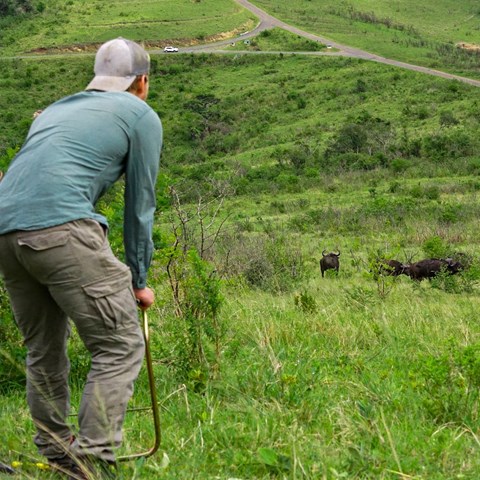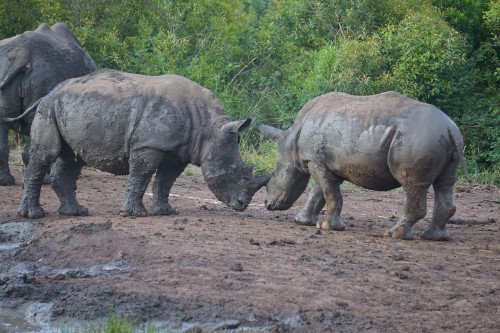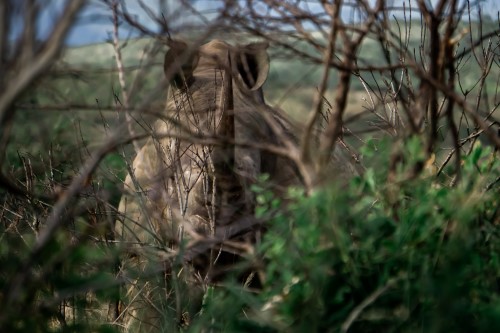Megaherbivores as climate fighters?

SLU is a university working with several projects all over the world to achieve a more sustainable planet. Looking into how white rhinos and other megaherbivores in South Africa can help fight climate change is one of them. Olli Hyvärinen is a Finnish PhD-student doing his thesis on this subject.
Hi Olli! Can you tell us about your PhD-project?
I started my PhD-studies 2018, but my interest began long before that when I studied sustainability science for my BSc in the Netherlands, and later a MSc in conservation biology in South Africa.
For my PhD I study how the largest of the terrestrial mammals i.e. megaherbivores influence the functioning of the earth system. More specifically I am using white rhino as a model to understand if and how megaherbivores influence ecosystem carbon sequestration. My research included a large field component in a South African nature reserve, where I collected soil samples with the help of multiple students. I also spent a year in the laboratory in the Netherlands analysing the different forms of carbon compounds occurring in the soil samples.
 Photo: Olli Hyvärinen
Photo: Olli Hyvärinen
How can the rhinos help fight climate change?
In our study, we are testing the hypothesis that rhinos can promote soil carbon sequestration and its persistence. Rhinos are ecosystem engineers that transform tall savanna grassland into functionally unique short grass "grazing lawn", which attracts other short grass grazers such as impala, warthog and wildebeest. These animals bring nutrients onto the lawns in the form of dung and urine, increasing the soil's nutrient levels. Furthermore, grazing lawns may limit the expansion of woody plants as well as savanna fires. So we hypothesise that rhino's can influence soil carbon storage and its persistence through influencing vegetation structure, nutrient addition and fire regimes.
All extant rhino species are unfortunately facing severe threats from poaching and habitat loss. Therefore, strong conservation efforts and range-expansion is imperative to securing their future.
What do you hope to achieve with the project?
Large body of research shows that the human-driven extinctions of large mammals since the last ice-age changed many aspects of the earth system functioning e.g. vegetation distribution, fire regimes and ecosystem carbon storage. There is still a large gap in our understanding of how todays still remaining large mammals influence earth system functioning. In order to realise the potential of using large-mammal conservation and restoration as a climate change mitigation strategy, we must first understand how they influence ecosystem carbon dynamics. Our research is one among very few that study how today's extant megaherbivores influence soil carbon storage, and probably the first to empirically test the effects of megaherbivores on carbon persistence. Therefore, I hope that this research paves the way for more efforts to quantify how conservation and restoration of megaherbivores can contribute to nature based climate solutions in the southern African context.
 Photo: Olli Hyvärinen
Photo: Olli Hyvärinen
How can this research help to achieve a more sustainable development?
There's a recent increase in interest to combine the objectives for climate change mitigation and biodiversity conservation/restoration. This research builds onto the empirical basis that is needed to successfully implement nature based climate solutions.
Thank you so much and good luck with your studies!